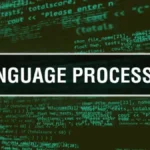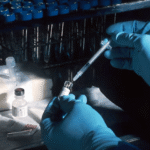The Short Synacthen Test (SST) is a diagnostic procedure designed to evaluate how effectively the adrenal glands produce cortisol—a hormone essential for managing stress, metabolism, and immune function. In the first 100 words, it’s important to note that this test helps determine if a person suffers from adrenal insufficiency, either primary (Addison’s disease) or secondary (caused by pituitary malfunction). The test involves administering synthetic adrenocorticotropic hormone (ACTH) known as Synacthen, then measuring cortisol levels before and after injection. The response indicates whether the adrenal glands can produce sufficient cortisol. In modern medicine, the Short Synacthen Test stands as a critical marker for identifying endocrine disorders, offering rapid insights into adrenal health with high diagnostic precision.
The Short Synacthen Test plays a pivotal role in diagnosing conditions where fatigue, weight loss, low blood pressure, and general weakness may mask deeper hormonal issues. Since cortisol levels fluctuate throughout the day, the test provides a standardized way to measure adrenal response under controlled stimulation. Synacthen, the synthetic form of ACTH, mimics the natural hormone secreted by the pituitary gland, triggering cortisol production from the adrenal cortex. This procedure is invaluable because adrenal insufficiency often presents subtle symptoms that can be misdiagnosed as depression or chronic fatigue syndrome. By assessing the adrenal function directly, healthcare providers can tailor precise treatments to restore hormonal balance, often preventing life-threatening adrenal crises that arise from undiagnosed deficiencies.
Understanding Cortisol and Its Role in the Body
Cortisol is often called the “stress hormone” because it plays a crucial role in managing how the body reacts to stress, regulates metabolism, and controls inflammation. However, beyond its nickname, cortisol influences multiple biological systems, including immune function, cardiovascular stability, and glucose metabolism. When cortisol levels drop below normal, individuals may experience extreme fatigue, dizziness, or muscle weakness. The body’s inability to maintain adequate cortisol levels can result from adrenal or pituitary gland dysfunction. Understanding cortisol’s daily rhythm, known as the diurnal pattern, also helps doctors interpret Short Synacthen Test results more accurately, as cortisol typically peaks in the early morning and declines by evening.
The History and Development of the Short Synacthen Test
The Short Synacthen Test was first introduced in the 1960s as a more efficient version of the standard ACTH stimulation test. Traditional testing involved several hours of monitoring and complex preparation. The SST simplified this by requiring only two to three blood samples over 30 minutes. Over time, the test has become the gold standard for evaluating adrenal function due to its reliability, reproducibility, and convenience. As laboratory techniques improved, endocrinologists began using precise assays to measure cortisol levels, leading to greater diagnostic accuracy. Today, the Short Synacthen Test remains one of the most widely performed hormonal assessments worldwide, balancing speed and accuracy in detecting adrenal insufficiency.
The Procedure of the Short Synacthen Test
The Short Synacthen Test begins with obtaining a baseline blood sample to measure the patient’s cortisol level. Then, a synthetic form of ACTH (Synacthen) is administered, usually as an intramuscular or intravenous injection. Subsequent blood samples are collected at 30 and 60 minutes after the injection. These samples help assess how much cortisol has been produced in response to stimulation. The procedure is simple, safe, and typically completed within an hour. Patients are advised to rest during the test, and healthcare professionals closely monitor their condition to prevent complications. The results are then compared against reference values, allowing physicians to determine adrenal gland responsiveness and overall endocrine function.
Table 1: Short Synacthen Test Procedure Overview
| Step | Description | Purpose |
|---|---|---|
| 1 | Baseline cortisol measurement | Establish pre-stimulation cortisol level |
| 2 | Synacthen injection (250 µg) | Stimulate adrenal glands |
| 3 | 30-minute blood sample | Measure early cortisol response |
| 4 | 60-minute blood sample | Assess peak cortisol production |
| 5 | Result interpretation | Diagnose adrenal or pituitary disorder |
Interpretation of Results
Interpreting the results of a Short Synacthen Test requires clinical expertise and an understanding of hormone physiology. A normal response involves a significant rise in cortisol levels—typically reaching or exceeding 500–550 nmol/L within 30 to 60 minutes. If cortisol fails to rise adequately, it suggests adrenal insufficiency. However, further differentiation between primary and secondary adrenal insufficiency requires additional testing. In primary adrenal insufficiency, the adrenal glands themselves are damaged and cannot produce sufficient cortisol even when stimulated. In secondary cases, the pituitary gland fails to release enough ACTH, leading to inadequate adrenal stimulation. Therefore, test results must always be interpreted in conjunction with clinical symptoms and other laboratory data.
Importance of the Short Synacthen Test in Endocrine Diagnosis
The SST is critical in identifying both overt and subtle adrenal disorders. Early detection prevents severe complications like Addisonian crisis—a life-threatening drop in blood pressure and blood sugar caused by acute cortisol deficiency. Endocrinologists often use this test as a first-line screening tool before proceeding to more complex investigations. Its reliability makes it particularly valuable in emergency departments, intensive care units, and outpatient endocrine clinics. The simplicity of administration also allows non-specialists to conduct the test under standardized supervision. “In modern endocrinology, the Short Synacthen Test bridges precision with practicality,” says Dr. Elaine Roper, a leading hormone researcher. “It remains an indispensable tool for early and effective diagnosis.”
Table 2: Comparison Between Short and Standard ACTH Tests
| Feature | Short Synacthen Test | Standard ACTH Test |
|---|---|---|
| Duration | 30–60 minutes | 4–8 hours |
| Substance Used | Synthetic ACTH (Synacthen) | Natural ACTH |
| Blood Samples | 2–3 samples | Multiple samples |
| Clinical Use | Quick assessment | Detailed evaluation |
| Diagnostic Accuracy | High | Very high |
Preparing for the Short Synacthen Test
Preparation for the SST is simple yet essential. Patients are generally advised to avoid taking corticosteroid medications for 24 hours before the test, as these can artificially elevate cortisol readings. Fasting is typically not required unless combined with other tests. Medical history and current medications must be reviewed to prevent interference. For accurate results, the test is usually conducted in the morning when natural cortisol levels are highest. The simplicity of preparation contributes to its widespread use in hospitals and clinics. “Patient cooperation is key,” notes Dr. James Hollander, an endocrinologist. “Even slight deviations, like recent steroid use, can alter outcomes significantly.”
Clinical Conditions Diagnosed Through the Test
The Short Synacthen Test primarily diagnoses adrenal insufficiency but also provides insights into related disorders such as hypopituitarism, congenital adrenal hyperplasia, and secondary cortisol deficiencies following long-term steroid therapy. In patients recovering from pituitary surgery, the test helps evaluate whether normal adrenal function has returned. It also aids in differentiating between chronic fatigue of psychological origin and fatigue due to endocrine dysfunction. Because adrenal insufficiency can mimic other illnesses, this test serves as a cornerstone for differential diagnosis, ensuring that patients receive targeted treatment rather than symptomatic relief.
Risks and Safety Considerations
Although the Short Synacthen Test is considered safe, minor side effects such as nausea, flushing, or brief dizziness may occur. These reactions typically resolve quickly and require no medical intervention. The test is contraindicated in individuals with known allergies to Synacthen or its components. In rare cases, an allergic reaction may occur, manifesting as rash or shortness of breath, which necessitates immediate medical attention. Clinicians are trained to manage such rare complications efficiently. The overall safety profile of the SST makes it one of the most trusted tests in endocrine diagnostics, balancing sensitivity and patient comfort effectively.
Limitations of the Short Synacthen Test
Despite its utility, the SST has certain limitations. It may not accurately reflect adrenal function in patients with recent pituitary damage or acute illness, as adrenal atrophy takes time to develop. Moreover, laboratory variations in cortisol assays can lead to minor discrepancies in results. Some clinicians argue that low-dose Synacthen tests (1 µg) offer greater sensitivity for detecting mild secondary adrenal insufficiency. However, standardization remains challenging due to variability across laboratories. The test’s interpretation also depends heavily on clinical judgment, highlighting that laboratory data must always be correlated with patient symptoms for meaningful diagnosis.
Advances in Synacthen Testing Technology
Modern endocrinology has benefited from technological advancements in hormone measurement. Automated immunoassays and liquid chromatography-tandem mass spectrometry (LC-MS/MS) have revolutionized cortisol detection, reducing errors and improving reliability. Additionally, researchers are developing novel analogs of ACTH to refine test accuracy and minimize side effects. Remote monitoring and digital health platforms are also integrating Short Synacthen Test data for real-time clinical review. These innovations signify the future of endocrine testing, where precision meets accessibility. As Dr. Karen Walsh states, “Technology has turned hormone testing from an art into an exact science, enhancing patient care through data-driven accuracy.”
Global Use and Clinical Guidelines
Globally, the Short Synacthen Test is endorsed by major health organizations, including the Endocrine Society and the British Society for Endocrinology. It remains a standardized diagnostic approach in over 70 countries. However, guidelines vary slightly depending on regional laboratory standards. In developing nations, simplified protocols have been introduced to accommodate limited resources without compromising accuracy. This adaptability underscores the test’s universal value in healthcare systems worldwide. Furthermore, it remains a critical component of medical education, ensuring that new healthcare professionals understand the principles of adrenal physiology and diagnostic endocrinology comprehensively.
Emerging Research and Future Directions
Current research is exploring how the Short Synacthen Test can be adapted for pediatric and neonatal use, where cortisol metabolism differs from adults. Scientists are also studying genetic variations that may influence cortisol response to Synacthen. These studies aim to personalize hormone testing, tailoring diagnostics to each patient’s unique endocrine profile. Another promising area involves pairing SST data with artificial intelligence algorithms to predict long-term adrenal health outcomes. The integration of digital analysis promises not only greater efficiency but also the potential for predictive endocrinology—an evolution in how adrenal disorders are monitored and managed globally.
The Human Perspective: Living with Adrenal Insufficiency
For patients, the Short Synacthen Test often marks the turning point between uncertainty and diagnosis. Living with adrenal insufficiency can be challenging, requiring daily medication, stress management, and regular monitoring. Many patients report a profound sense of relief once a diagnosis is confirmed, allowing them to understand their fatigue and weakness within a medical framework. Patient advocacy groups now emphasize awareness of early symptoms and encourage routine screening for at-risk individuals. The SST, therefore, represents not just a diagnostic tool but also a pathway toward better quality of life through informed medical care.
Conclusion
The Short Synacthen Test stands as a cornerstone of modern endocrine diagnostics—simple in design yet powerful in impact. Its ability to accurately evaluate adrenal function within an hour makes it indispensable in detecting both primary and secondary adrenal insufficiencies. By directly measuring cortisol response, the test provides clinicians with precise data essential for guiding treatment decisions. Over the decades, it has evolved from a laboratory innovation into a routine, globally standardized medical practice. As medicine progresses toward personalized care, the Short Synacthen Test continues to serve as a trusted, evidence-based measure of hormonal health. “Medicine is not just about finding disease,” reflects Dr. Helen Strauss, “it’s about understanding the body’s response to imbalance—and few tests do that as well as the Short Synacthen Test.”
FAQs
Q1: What is the main purpose of the Short Synacthen Test?
The Short Synacthen Test evaluates adrenal gland function by measuring cortisol response after synthetic ACTH stimulation, diagnosing adrenal insufficiency.
Q2: How long does the test take to complete?
The test usually takes around 60 minutes, including baseline and post-injection blood sample collection.
Q3: Is fasting required before the test?
Fasting is generally not required, but patients should avoid corticosteroid medications before testing unless instructed otherwise.
Q4: What conditions can the test detect?
It detects adrenal insufficiency, hypopituitarism, congenital adrenal hyperplasia, and cortisol suppression from long-term steroid therapy.
Q5: Is the Short Synacthen Test safe?
Yes, it is considered safe, with only mild and temporary side effects such as dizziness or flushing in rare cases.











